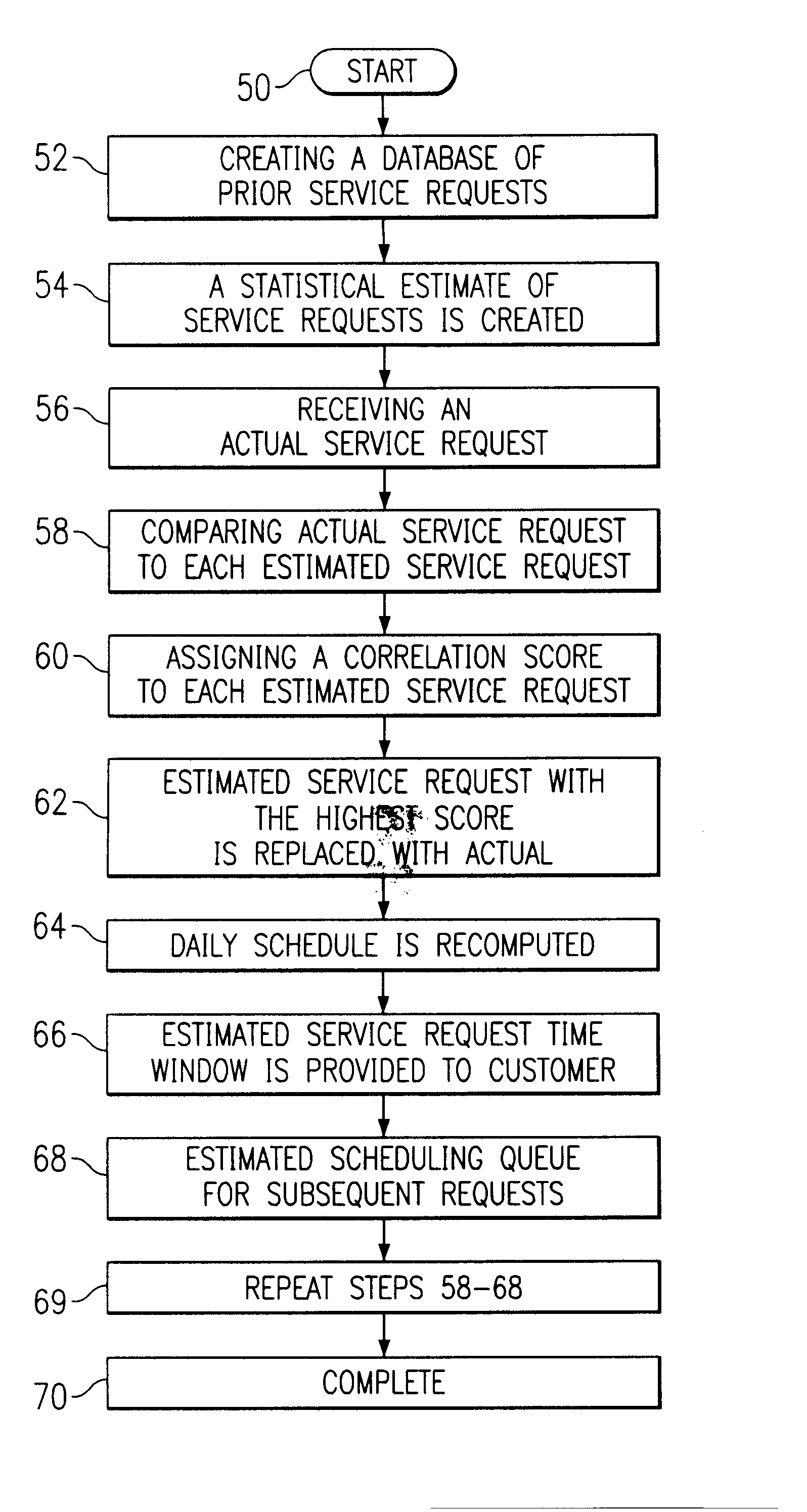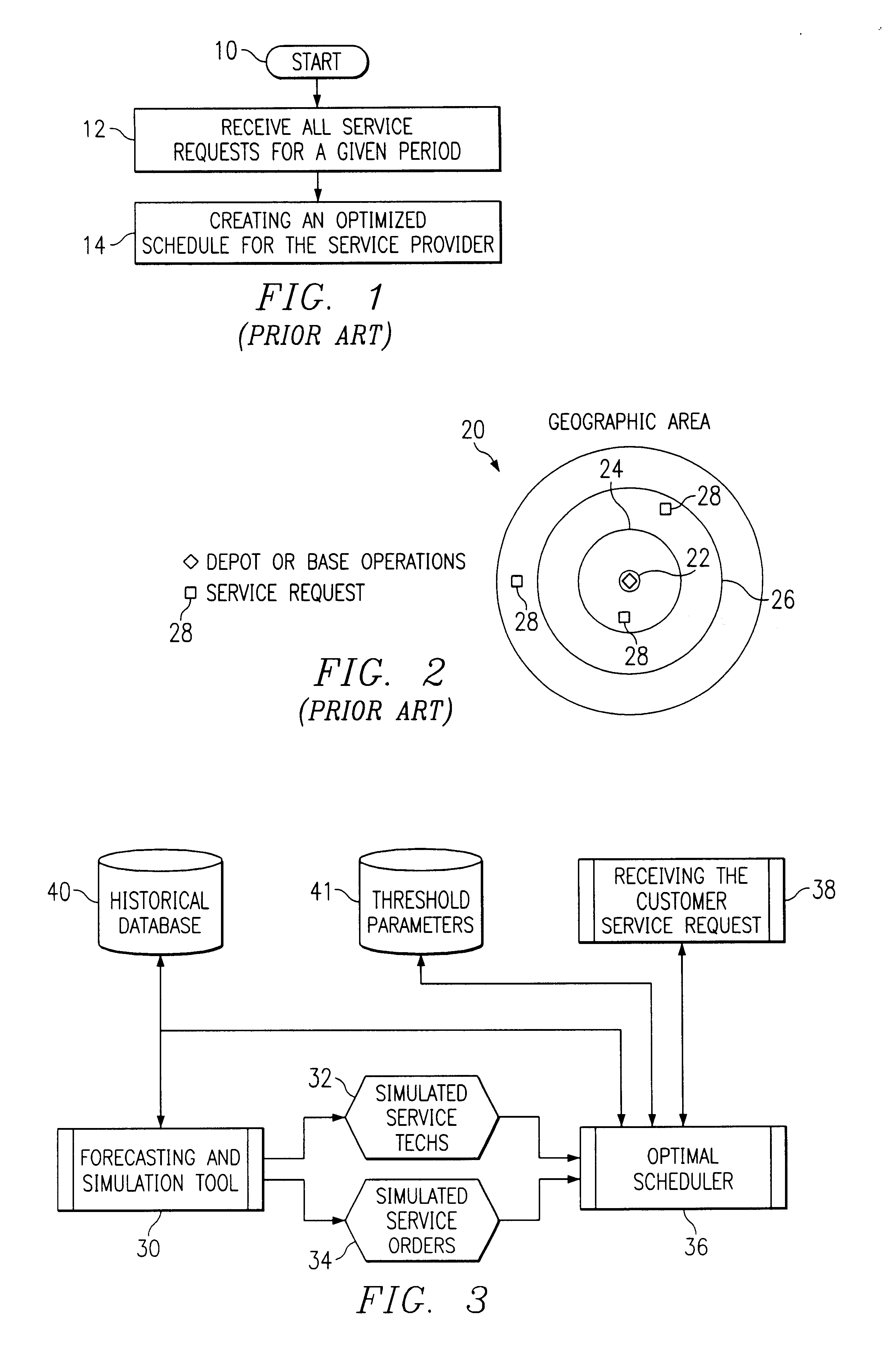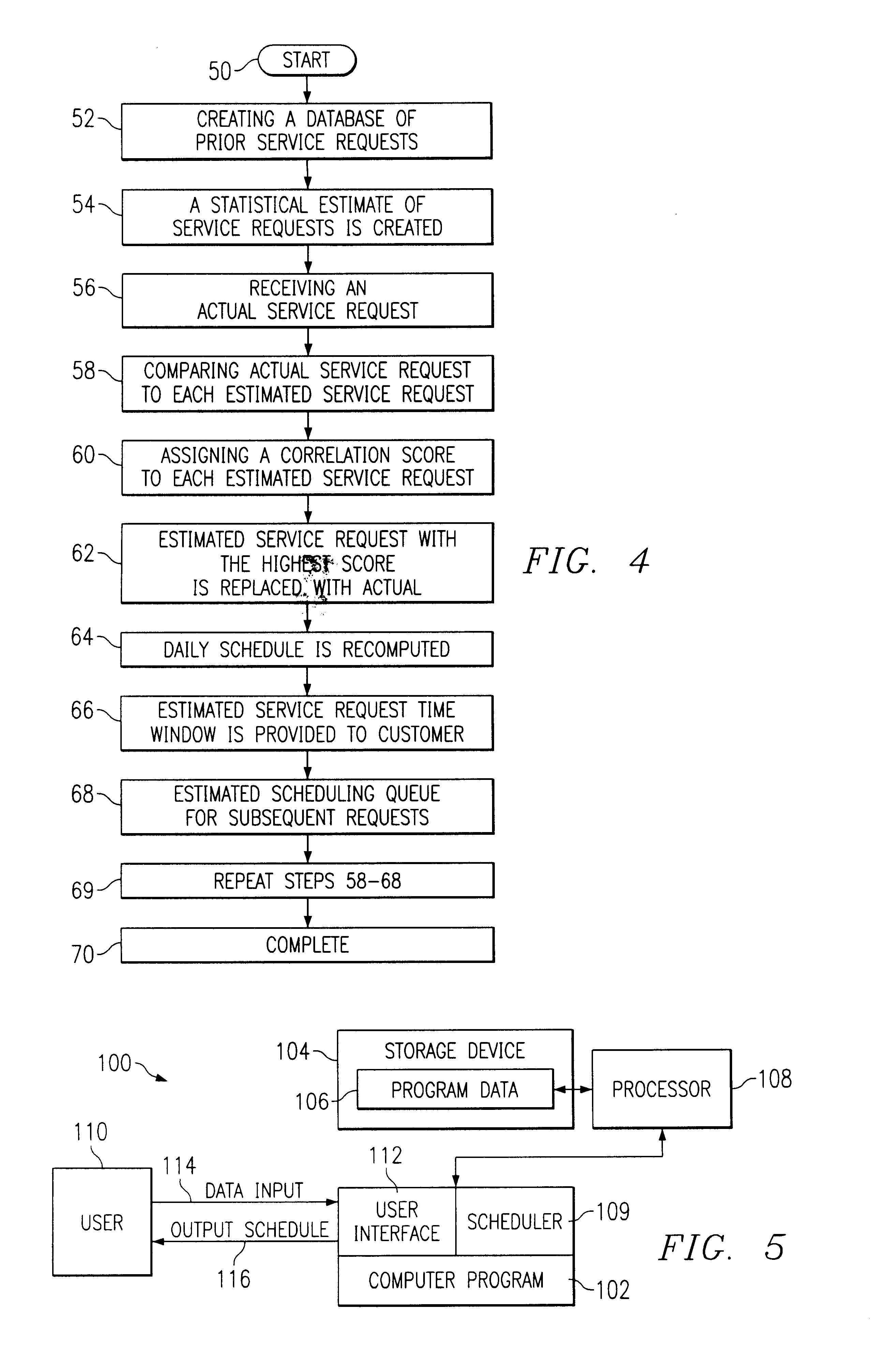Method and system for allocating specific appointment time windows in a service industry
- Summary
- Abstract
- Description
- Claims
- Application Information
AI Technical Summary
Benefits of technology
Problems solved by technology
Method used
Image
Examples
Embodiment Construction
[0032]Preferred embodiments of the present invention are illustrated in the FIGUREs, like numerals being used to refer to like and corresponding parts of various drawings.
[0033]The present invention provides a method and system for allocating specific appointment time windows in a service industry.
[0034]The present invention addresses an improvement in the ability of any service company to provide customers specific appointment time windows, within which a service technician (or delivery person) will arrive at the customer's residence or facility on the specified day. Typically a customer will contact the service provider via a call center, service center or similar facility with a service request. The customer may request a specific time or merely request that the service provider inform the customer of the specific time or time window at which the service technician will provide their services. Customer service can be greatly improved if the specified time window can be made as na...
PUM
 Login to View More
Login to View More Abstract
Description
Claims
Application Information
 Login to View More
Login to View More - R&D
- Intellectual Property
- Life Sciences
- Materials
- Tech Scout
- Unparalleled Data Quality
- Higher Quality Content
- 60% Fewer Hallucinations
Browse by: Latest US Patents, China's latest patents, Technical Efficacy Thesaurus, Application Domain, Technology Topic, Popular Technical Reports.
© 2025 PatSnap. All rights reserved.Legal|Privacy policy|Modern Slavery Act Transparency Statement|Sitemap|About US| Contact US: help@patsnap.com



